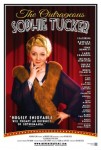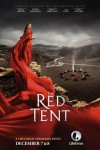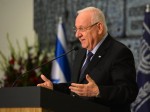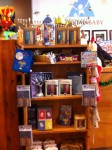Hebrew is an ancient language still spoken in Israel and by Israelis worldwide. We all know that. This is history. Hebrew was revived about 130 years ago by Zionist Jews coming to Palestine, and those of us who speak Hebrew know that we speak a Semitic language that evolved from biblical and mishnaic Hebrew. However, when thoroughly researching the structure of Israeli Hebrew, things appear differently.
In Colloquial Israeli Hebrew: A Corpus-based Survey (Walter de Gruyter & Co., 2014), I show that spoken Israeli Hebrew is different from ancient forms of Hebrew. Different in almost every linguistic aspect. Different to the level of defining two separate languages; one is ancient, the other is new. The ancient one has a set of Semitic rules; the new one has a new set of rules that are sometimes Semitic and sometimes not. The vocabularies of the two languages are similar, but not identical. And, linguistically, it is very difficult to define them as if one evolved from the other. Despite their similar vocabularies, they differ in too many linguistic characteristics to be considered one language.
Language is commonly considered a set of words, but languages are much more complicated systems than just a random collection of words. Language is a human system of communication. It contains a set of signs, common to all speakers of the same language. These signs represent notions in the real world. Grammatical rules govern the way these signs are formed, pronounced and ordered. These grammatical rules define the relations between the elements in the language, which form the final contents we transfer to others. These rules are common to all speakers of the same language.
Languages have native speakers – those who acquired it during childhood, and use it natively to communicate with others. Language acquisition is a biological process that all of us, humans, undergo. We are all born with a linguistic system that allows us to acquire a language, our language. The process of language acquisition takes about 10 to 12 years. Then, the system with the linguistic properties of our native language is permanently stored in our brains. This system contains all the information about our native language that we need for communication. It is an unconscious system, not an organized set of rules like the ones taught in schools. All native speakers of the same language share the same set of linguistic rules. Otherwise, they would be unable to communicate with one another, i.e., produce coherent speech and comprehend others’ speech, using the same set of signs and rules.
Vocabulary vs. grammar
Vocabulary is the easiest part to transfer from one language to another. Words are borrowed from one language to another all the time. Only phonological adjustments are sometimes needed to turn a foreign word into a word in one’s native language. But borrowing other elements is much more complicated, and much less common. Languages have different structures and different linguistic preferences; what is “friendly” in one language can be very complicated in another. Many words were borrowed from biblical and mishnaic Hebrew into Israeli Hebrew over the years; some have gained additional or alternative meanings. At the same time, very few rules could be transferred in their original form from these sources into Israeli Hebrew. This is because of an interference of the revivers’ native languages, which were very different in their linguistic structures from the Hebrew sources.
When learning Hebrew grammar, we have been frequently taught that we speak Hebrew with mistakes. However, we still produce coherent speech in Israeli Hebrew, and we still comprehend other people’s speech. This means that we all share the same system of linguistic rules. True, these are not the rules “desired” by our teachers. These are other, unconscious, rules that are situated in our minds, but they are our native rules, which we master and use all the time. If we have passed the age of 12, our language system has been completed, and we have a grammar of our native language in our minds. And it is the same grammar to all speakers. Native speakers cannot make mistakes in their own language. Furthermore, what seem like “mistakes” are usually identical among all native speakers. This is an indicator that they are not mistakes, but rather rules. Only no grammarian has officially defined them yet, and they are different from the “desired” rules. Israelis, thus, do not speak Hebrew with mistakes, but rather speak a new language. This language has a set of rules different from that of biblical and mishnaic Hebrew – a new set of rules based on various origins, many of which are European languages, as elaborated herein.
Phonological characteristics
Phonology deals with everything that has to do with the sounds, syllables and intonation of a language. The typical sounds of Israeli Hebrew are very similar to the ones found in European languages. Also, all the typical sounds that are dominantly detectable in many Semitic languages are absent. These are, for example, pharyngeal, glottal and emphatic consonants. They are never noticed in Israeli Hebrew speech.
Syllables in Israeli Hebrew can contain double and triple consonant clusters. These clusters are absent from ancient forms of Hebrew. Such sequences are “forbidden” in traditional Hebrew. On the other hand, syllables having double and triple consonant clusters are typical in European languages. Such clusters were very common in Yiddish, which is the source of many characteristics of Israeli Hebrew.
Short and long vowels in spoken Israeli Hebrew can distinguish between the meanings of words, whereas in traditional Hebrew this is impossible. Thus, a difference in meaning is enabled between the words ze (this) and ze: (identical) in Israeli Hebrew speech. This difference is entailed by the short versus long vowels of the same quality. Traditional Hebrew never allows long vowels in syllable nuclei. Historically, the long vowels are explained as a result of a falling weak consonant between two short vowels. Synchronically, it is evident that vowel length makes a semantic difference between words.
Languages have “music,” that is an extra-linguistic feature of speech. This “music” varies between languages, and contains several features, one of which is intonation. Israeli Hebrew intonation is very similar to that of Yiddish, and very different from that of Semitic languages.
Morphological characteristics
Morphology deals with the way words are derived, and what is the nature of their components. The basic morphological unit in a language is called a morpheme; it is the smallest grammatical unit that represents a meaning. In English, -ness is a morpheme representing a state, as in happiness. A morpheme is not an independent component; it is always attached to another element.
Semitic languages employ a unique strategy of word formation that is based on roots and patterns. Roots and patterns are abstract morphemes, which cannot be attached one to the other. Instead, they are integrated into one another to form new words. The root contains a sequence of consonants, usually three or four, carrying a general meaning; the pattern is a linguistic structure, also carrying a general meaning. The pattern would usually contain vowels, and also reserved locations for the root consonants in between these vowels. Roots and patterns cannot be pronounced independently; their pronunciation is enabled only when being integrated into one another.
Words in Semitic languages, including traditional Hebrew words, are primarily formed by a combination of a root and a pattern. Yet, words in Israeli Hebrew are derived in many other ways, too. Indeed, there are words in Israeli Hebrew that are formed by a root-pattern derivation, such as many verbal forms. However, Israeli Hebrew speakers clearly prefer a more European-like formation of words. European-like word formation employs various concatenation processes of elements. Concatenation is typically being attached in a chain. There is a higher priority among Israelis to form new words in their language this way. By adding a suffix to a stem, or by blending two words into one, they keep the meaning of the new word more transparent. The new words represent one concept while, at the same time, they reflect the original components. Therefore, this kind of derivation has gained priority over the root-pattern strategy.
The verbal system
When looking thoroughly into the verbal system of spoken Israeli Hebrew, many questions arise. Traditional Hebrew, like other Semitic languages, has a rich verbal system based on roots and patterns. There are seven verbal patterns in traditional Hebrew, standing for role-taking and tenses. Two of them represent passive meanings, yet Israeli Hebrew employs only five verbal patterns, and no passives. Passive forms in Israeli Hebrew are very rare, uncommon and unnatural. Native speakers of the language would comprehend passive forms, but never produce them naturally.
The verbal patterns of traditional Hebrew represent tenses: past, present and future. They also include unique imperatives, one for each non-passive pattern. However, the five verbal patterns of Israeli Hebrew do not stand for tenses. They rather reflect aspects and moods, similarly to Slavic languages. Also, they have no unique imperative forms; the latter are derived from prefixed forms that represent mood. The Israeli Hebrew verbal system, in its overall structure, is not similar to any Semitic verbal system. Conversely, it is identical to the structure of the Russian verbal system; the same aspectual forms stand for the same times in the two systems.
Basic verbal stems in Israeli Hebrew are mostly created in the “Semitic” way, by the combination of roots and patterns. However, newer processes of verb formation employ the combinations of stems and affixes, as well as nouns and affixes, on the account of the traditional root-pattern formation. The use of nominals to form verbs is typical to European languages, where a noun or an adjective can easily function as a verb, with or without an affix.
The formation of a verb in Israeli Hebrew is a complicated process, which involves several semantic and morphological processes. Initially, a stem is formed, either by a root-pattern combination, or otherwise. Then, additional suffixes and/or prefixes are attached to it to denote person, gender and number. Many verbal stems are created from foreign words. These stems are governed by the foreign word’s original phonological structure. This means that the sequence of consonants and vowels in the foreign word would govern the choice of the pattern in which the final verb is created. Stems can sometimes be created from whole words, in particular nouns.
The Israeli Hebrew verbal system also contains many concatenated verbs. Concatenated verbs are combinations of at least two consequent inflected verbal elements, each is inflected separately. And no separators are allowed between the two elements; they must be consequently ordered. Concatenated verbs are not observed in other Semitic languages, nor in traditional Hebrew. They express a wide variety of more specific aspects and moods than the basic aspectual and modal notions of the single verbal forms. Concatenation processes, therefore, are a characteristic of Israeli Hebrew, in both the verbal and the nominal systems. It is a linguistic process that is uncommon in Semitic languages, and is more typical to European languages.
Language syntax
Syntax deals with the composition of phrases and clauses from single elements, and the relations between these elements within the phrase or clause. The syntactic features of Israeli Hebrew reflect almost exclusively European languages, whereas Semitic features can be hardly detected.
Each human language has a typical word order of elements in the clause. The elements in the clause are commonly represented by the letters S, V and O, standing for subject, verb and object, respectively. Semitic languages are characterized by a word order of VSO, which means that the verb is typically the first element in the clause, followed by the subject. Israeli Hebrew, however, is characterized by a word order of SVO, in which the subject precedes the verb. This word order is the default order in European languages. This is how the elements in the clause are ordered in Germanic, Roman and Slavic languages. On the other hand, nominal clauses with no verbs are allowed in Israeli Hebrew, which is a Semitic characteristic, and does not exist in European languages. This is one of very few Semitic features in Israeli Hebrew syntax.
Noun compounds in Israeli Hebrew are combinations of two consequent nominals that form a phrase having one meaning. The components of a noun compound in Israeli Hebrew can be either a sequence of two nouns, or a sequence of a noun and an adjective. Definiteness of these compounds is similar to European languages: noun compounds in Israeli Hebrew take a definite article at the beginning of the phrase, on the first component, referring to the whole phrase as one unit of meaning. This is parallel to making, for example, the English term “go-between” definite by adding the definite article before the first component, as in “the go-between.” Semitic languages, including normative Hebrew, typically take the definite article on the second component of the term.
Nouns and adjectives in Semitic languages have gender. During speech, Semitic languages require a gender and number agreement between elements in the speech sequence. Israeli Hebrew has gender distinction in nouns and adjectives. However, gender and number agreement in Israeli Hebrew speech works only one way: backwards. It exists only when referring to a previously mentioned element. When an element is expected to agree in gender and/or number with a following element, it never does. It appears in its unmarked form, usually the masculine singular. This one-way agreement rule is apparent in all the language systems – verbs, nouns, adjectives, etc. Standing out are the numerals that in Semitic languages have two forms: masculine and feminine. Israeli Hebrew, apart from the numeral one, employs only one form for both genders. The use of neutral numbers and the distinction in the numeral one is also employed in Roman languages.
Summary
Israeli Hebrew has not evolved directly from earlier Hebrew forms. It was created artificially, employing, although unconsciously, mixed rules from many languages, including earlier forms of Hebrew. This way, some of the original Hebrew characteristics, which are Semitic, could be preserved, whereas at least as many were “imported” from other, European, languages. (See G. Zuckermann, “A New Vision for ‘Israeli Hebrew’: Theoretical and Practical Implications of Analyzing Israel’s Main Language as a Semi-Engineered Semito-European Hybrid Language,” Journal of Modern Jewish Studies 5, no. 1 (2006): 57-71.)
So, has the revival of Hebrew ever occurred?
We are nearing Chanukah, and Chanukah is about miracles. Perhaps the miracle of Hebrew revival never happened, but another miracle has certainly taken place: the emergence of a new language. A language whose number of speakers has been increasing, and which is alive and evolving. It has a short history of 130 years – it does not go back thousands of years – but its emergence is at least as miraculous as the revival of a language, and as impressive.
Nurit Dekel is principal linguist at NSC-Natural Speech Communication, an academic researcher of Colloquial Israeli Hebrew teaching at the Levinsky College of Education, Tel Aviv, and the author of Colloquial Israeli Hebrew: A Corpus-based Survey (Walter de Gruyter & Co., 2014). She thanks David J. Swykert (magicmasterminds.com/djswykert) for reviewing this essay and providing very insightful comments.





